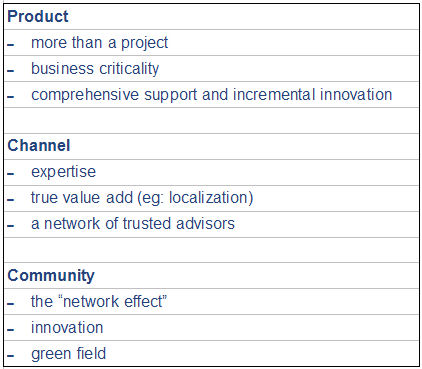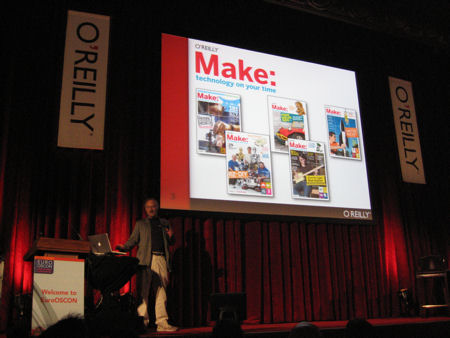[via Stephen Walli]
 As already discussed, we had the chance to be in touch with Stephan Walli, ex-VP by Optaros and before, deeply involved in the Shared Source work by Microsoft. Stephan was helping us to define an international Software license for our components that is solid, not too complicated to understand and that fulfills our requirements, i.e. something like acting within an User Community based on Open Source mechanisms. I have presented some outcomes and our thoughts about that at the EuroOSCON 2006 conference.
As already discussed, we had the chance to be in touch with Stephan Walli, ex-VP by Optaros and before, deeply involved in the Shared Source work by Microsoft. Stephan was helping us to define an international Software license for our components that is solid, not too complicated to understand and that fulfills our requirements, i.e. something like acting within an User Community based on Open Source mechanisms. I have presented some outcomes and our thoughts about that at the EuroOSCON 2006 conference.
Stephen has posted a great article about Hyperic for some weeks, which contains great inputs about such kind of mechanisms.
What is Hyperic doing?
Hyperic brings to the market an IT operations management solution. Founded in 2004 and based in San Francisco, they are delivering “web and open source management products that enable our customers to manage their web operations environment from a single portal at an effective cost. Hyperic combines an easy to deploy solution with subscription pricing providing our customer cost predictability and low risk.”
Have a look at their products.
Inputs about their model
It recognizes that the HQ development team can’t innovate all the plug-ins to keep up with all the customers scenarios and is creating and investing in their user community. This value provides value to all the other users and customers in the HQ world.
Hyperic recognizes that their potential customer base is a well connected group of people that share software and ideas constantly through multiple channels, and gives them something to share. System administrators have always believed in open source software (for decades before we called it open source) and have always shared tools and knowledge.
The enterprise subscription provides support, training, indemnifications, certified binary images, and a few additional features that a really large IT environment would want to add.
Hyperic has a flat pricing model and one that is inexpensive enough to creep in under the floor boards of large organizations. Contrast this with the more costly Draconian multi-axis pricing models of some of the Big Guys which essentially penalizes the customer for each new management point when they need it the most. This literally becomes self-limiting. There will come a day when the customer says “enough”.
Instead of engaging in a heavy expensive sales cycle with the C-level execs against the Big Four Incumbents around Enterprise Management, they can slip into the bottom of the organization buried in departmental budgets when the open source users become customers.
If you’re a business person thinking about open source, start imagining how to engage a community of users in the small (away from the internal toxicity of ROI and TCO discussions with the CxO and an incumbent sales force), so they grow into customers in the large.
Cross-posted on ecenter solutions blog.






 As already discussed, we had the chance to be in touch with
As already discussed, we had the chance to be in touch with 




